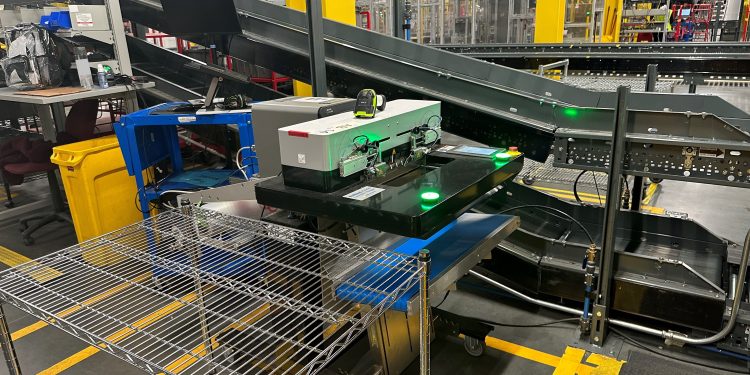Handling Every Type of Packaging

Traditionally, warehousing has used corrugated boxes for shipping products. They’re easy to acquire, easy to load, seal and apply labels to, and they work well with automated scanning, labeling, applying, and manifesting (SLAM) equipment. Boxes remain a favored packaging choice and aren’t going away any time soon.
But for all their upsides, corrugated boxes also have downsides when it comes to shipping operations. For example, they are expensive compared to other solutions—that cost goes beyond the purchase price. Consider the storage space they take up in your warehouse, for instance, space that could be allocated for other storage or equipment.
Additionally, boxes are not a particularly efficient means of packaging, as most items shipped in boxes must include some amount of protective inner packing materials to prevent damage. There’s also an environmental impact to the use of boxes and protective packing materials, as some cannot be recycled or reused.
There are other, less traditional options to consider, which can work equally as well with automated SLAM equipment. Poly bags are an increasingly popular choice, mostly because apparel has become one of the top items in ecommerce fulfillment. Clothing isn’t fragile, so it can easily go into a bag. SLAM equipment can apply a label on the bag, or even print directly on it. Another option is a padded mailer for small, light-duty items.
In the past few years, right-sized packaging has also entered the arena, offering warehouses a way to optimize their packaging. A system measures the item and then automatically selects (or in some cases builds) the right packaging for it, whether a box, a padded mailer, or a poly bag. All work with automated SLAM equipment and companies can set up different SLAM stations around the facility, each designed to manage a different type of packaging.
Currently, many warehouses are missing out on the benefits of SLAM. No matter what type of packaging is being used, incorporating a SLAM area with automated SLAM equipment will reduce manual operations and provide cost- and time-saving efficiencies.
A big incentive for implementing SLAM, especially in a tight labor market, remains its rate of productivity. With automation, a warehouse can expect to push products out the door at a rate four to five times faster than manual packaging. This can be especially beneficial to your operations as you approach peak seasons. Rather than having to add costly temporary staff—which are hard to recruit right now—SLAM equipment can do the work of many hands.
Automated SLAM stations are also space efficient. Instead of expanding your warehouse’s footprint or adding an additional facility to handle increased throughput, SLAM areas are designed to allow you to use your space more efficiently, allowing you to do more within the same footprint.
No matter what products you are shipping out of your warehouse, implementing SLAM areas will provide increased order accuracy, allow labor to be utilized in other areas of your operations, and enable the ability to handle seasonal spikes without hiring additional labor.
The MHI SLAM Industry Group is conducting a survey to better understand the challenges and opportunities facing the ecommerce fulfillment operations. As a practitioner in this field, your insight and experiences are of utmost importance to us. We would be grateful if you could spare a few minutes to share your thoughts and opinions through this survey. Your participation will contribute to shaping the future of the industry.
To learn more about MHI’s SLAM industry group: www.mhi.org/slam
More information about Scanning, Labeling, Applying, Manifesting:
Best Practices For The Last 100 Feet Of Fulfillment
Why A Vertical Reciprocating Conveyor Can Play A Critical Role …
Better Data Equals Better Labeling And Tagging
Podcast: Transitioning From Manual To Automated SLAM (The Last 100 feet)



